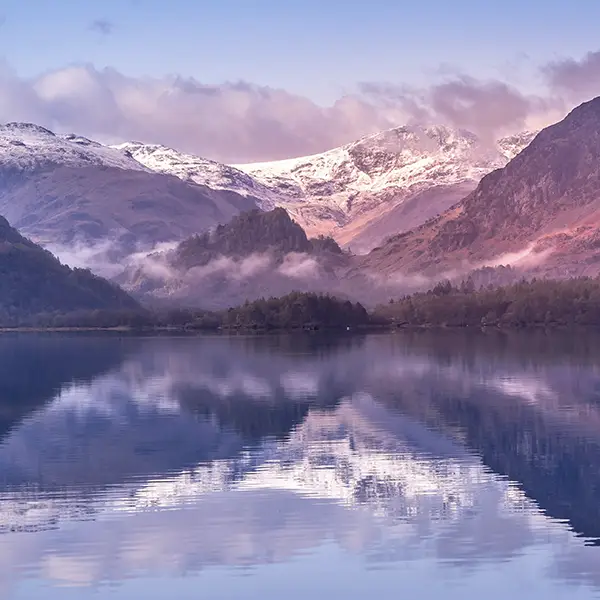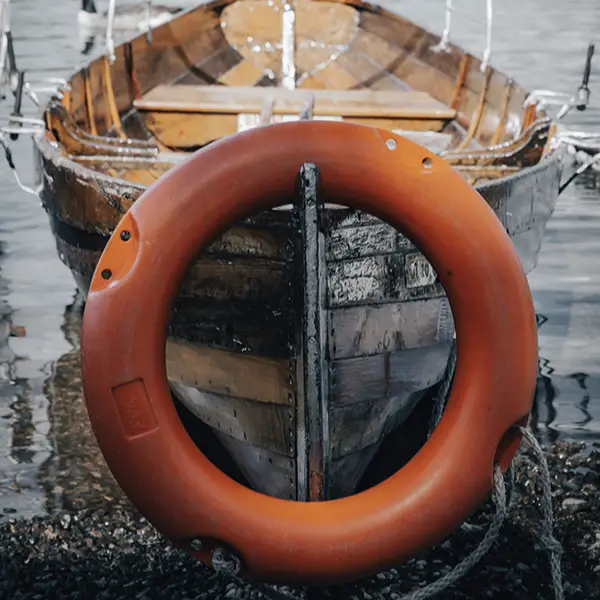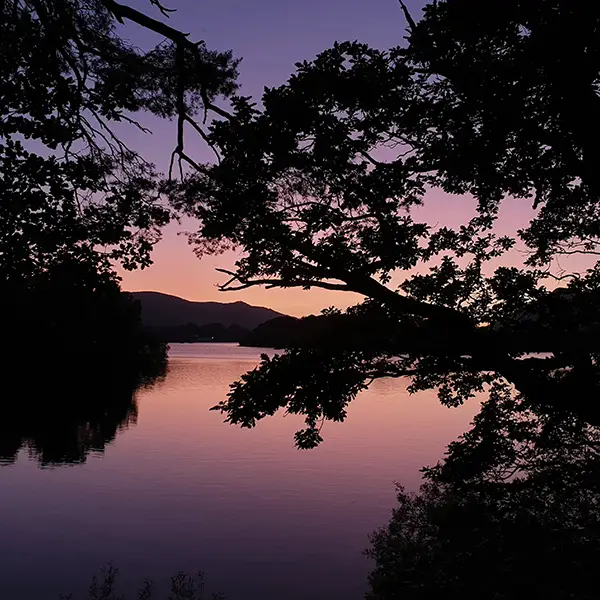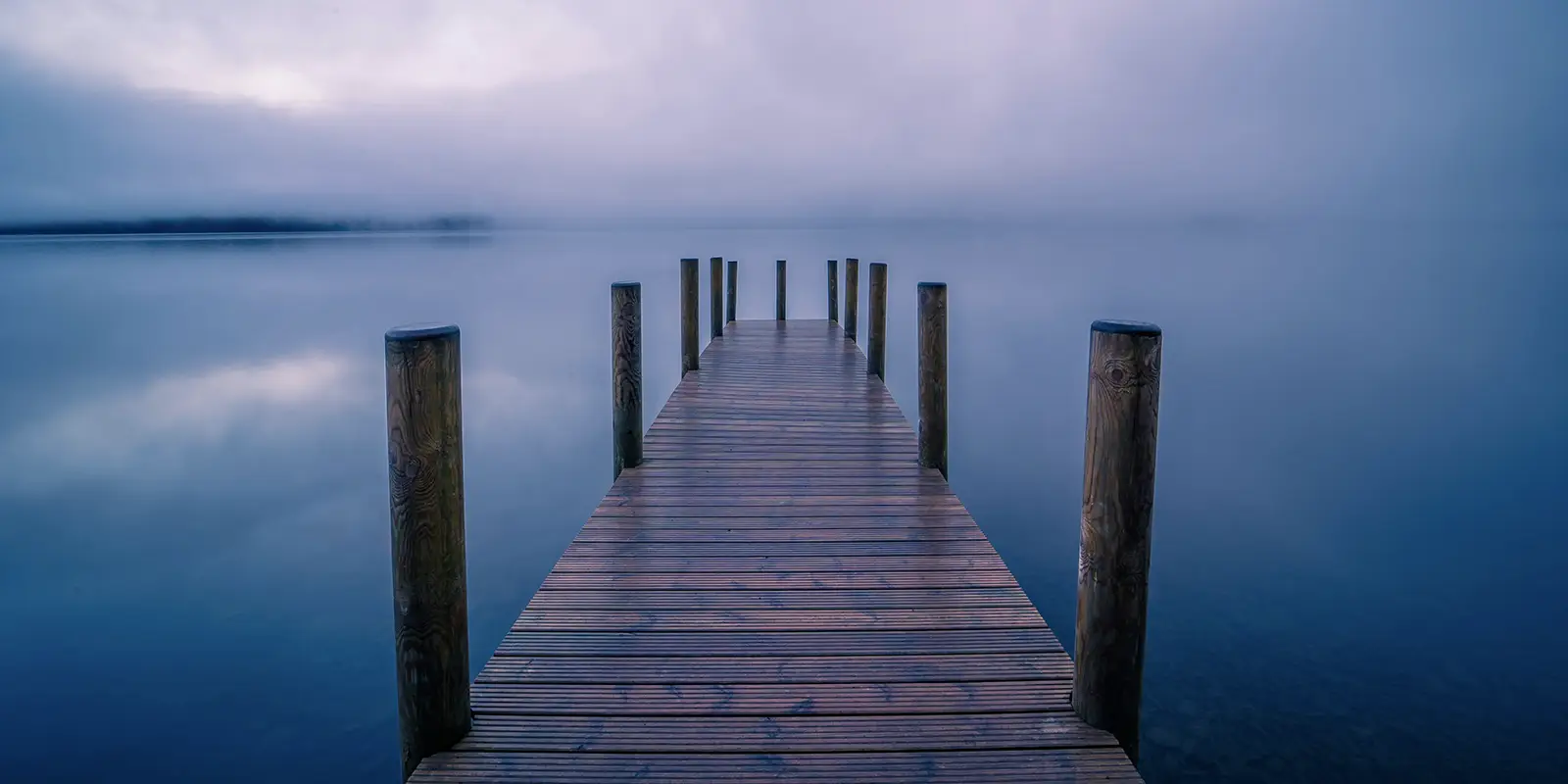Serene and beautiful Derwentwater lies in the Lake District National Park in Cumbria, England. Even though this lake is in England, an English-speaking country, there is no “lake” officially attached to its name. The name Derwentwater includes the word water body from its root language, Brittonica, a Celtic language.
Derwentwater is three-miles (about 5km) long and one-mile (16 km) wide at its widest point, so quite a small lake. Surprisingly, Derwentwater packs a big punch into a tiny area. Serene is the word most often used to describe it. Derwentwater draws photographers and artists to its shores like a powerful magnet.
A small part of its allure is that its waters reflect the mountains and clouds like a live mirror with an ever-evolving landscape. Recreational activities, historical and cultural significance, natural flora and fauna, and scenic vistas characterize Derwentwater.
Why Is Derwentwater Famous?
Cumbria is a ceremonial county in North West England. It borders the Scottish council areas of Dumfries and Galloway and Scottish Borders to the north, borders Northumberland and County Durham to the east, North Yorkshire to the south-east, Lancashire to the south, and the Irish Sea to the west.
England created Cumbria County in 1974 from the historic counties of Cumberland, Westmorland, Lancashire, north of The Sands, and a small part of Yorkshire. It is the “Queen of the Lakes” because of the surrounding fells, which are high and barren landscape features, like a mountain or moor-covered hill.
Keswick, Cumbria, serves as the gateway to Derwentwater and the Lakes District. This bustling market town on the northern edge of Derwentwater first manufactured the pencil. The Keswick Pencil Museum takes visitors through a journey of graphite and pencil discovery from its simple beginnings as a cottage industry to modern-day production.
Though Keswick’s population is slightly under 5,000, this village offers quite a few popular attractions. During the 16th century, the area served as a landing point for the local mining industry. Later, in the 18th and 19th centuries, the Keswick region became a source of inspiration for romantic poets, including William Wordsworth (not to confuse with Henry Wadsworth Longfellow).
Is Derwentwater Worth Visiting?
The number of visitors annually certainly portrays that Derwentwater is definitely worth your time to visit the beautiful region. The Lake District National Park reports that its current survey shows that 18.1 million people visit Derwentwater annually.
The Lake District National Park Authority manages Derwentwater, promotes the lake as a unique corner of England, and encourages visitors to understand its beauty and help the people who live and work in the park. The staff incorporates rangers and field workers, advisers at its visitor centers, and planners and ecologists.



Who Owns the Island on Derwentwater?
England’s National Trust owns most of Derwentwater’s islands. Several small islands rise out of Derwentwater. The largest is privately owned Derwent Island, with an 18th century Georgian-era mansion, known as Derwent Island House, and open to visitors on specific days. Lush gardens and forested areas surround the Derwent house.
The other notable islands in Derwentwater are Lord’s Island, Rampsholme Island, and St. Herbert’s Island. Rampsholme Island is considerably smaller than the other three islands. This island is named after the wild garlic that grows prolifically on this island, called ramps.
Lord’s Island was home to the Earls of Derwentwater until the Jacobite rebellion in 1745. The foundations of a house that was built on this island around 1450 remains today. At one time, trees grew on Lord’s Island where thousands of rooks (large shiny crows). Both the trees and crows are gone.
St. Herbert’s Island was named after the seventh-century hermit, St. Herbert, who brought Christianity to the area in A.D. 685. He took sanctuary on the island. The remnants of a cell in the island’s undergrowth are evidence of St. Herbert’s hermitage. The Friars Crag viewpoint in Keswick commemorates the monks who sailed to St. Herbert’s Island on pilgrimage to visit St. Herbert.
Reputedly, one floating island which intermittently appears towards the end of summer consisting of vegetable matter mass that floats up to the surface on a cloud of methane gas. The National Trust welcomes boaters to land on the islands. It requests that visitors do not stay overnight, do not light fires, and to please take care not to disturb nesting birds.
How Deep Is Derwentwater?
Derwentwater in the Lake District National Park of England is three-miles long, one-mile wide at its widest point, and 72-feet deep (21.9456 meters) at its deepest point. The average depth of the lake is 18 feet (5.5 meters), and it has a surface area of 1235.53 acres (5-square kilometers). Derwentwater is the third largest body of water in the lake’s region, the widest lake in Cumbria, and the third largest in the region.
How Clean Is Derwentwater in England?
As of May 2024, The Environment Agency (EA) reported that Derwentwater in the Lake District, England has bathing water status and its quality is monitored weekly between May and September. The EA’s website issues pollution risk warnings and advises against bathing if a pollution incident occurs.
The EA recently added four new bathing spots to its roster of beaches to bathing water status, which gives the EA authority to test for pollutants. The BBC reported in May 2024 that the EA’s Andy Brown told the news outlet, “Our specialist samplers come in every week now, during the bathing water season”. People can check Derwentwater’s water quality on the Swimfo website.
Is it Safe to Swim in The Derwentwater?
Yes, and as noted above, the popular bathing areas are monitored for toxins weekly during bathing season, from May to September.
Is There Green Algae in Derwentwater?
The EA reported, “Blue-green algal blooms are nothing new, as reports date back to the 12th century. However, in the Lake District, lakes such as Derwentwater and Ullswater have not had reported blooms for several years. Prior to 2018, a bloom hadn’t been confirmed on Ullswater since 1999.”
As noted above, the EA issues warnings when it is not safe to swim in Derwentwater or other lakes in the Lake District.
How Long Does it Take to Walk Around Derwentwater Lake?
The ten-mile Derwentwater Walk in Keswick, Cumbria, England, can take at three and a half hours to complete. Depending on your pace and stops, it can take between four and six hours to complete at a moderate pace. The walk is considered easy and flat, with paths meandering through woodlands and along the lake’s shores.
The walk passes by picnic spots, cafes, and restaurants. According to a popular tourist guide, “The Derwentwater Walk is a scenic circular route that loops around Derwentwater, one of the most stunning lakes in the Lake District, near Keswick, Cumbria. Spanning about 10 miles (16 km), it is suitable for all skill levels, attracting both leisurely walkers and seasoned hikers.”
Highlights of the Walk include…
Terrain and Pathways:
- The route offers a diverse mix of landscapes, from lakeside tracks to woodland trails and open meadows. The paths are generally flat and well-kept, ensuring easy access for most visitors.
- Parts of the trail follow the lake’s shoreline, providing peaceful water views, while other sections lead through lush forests and countryside.
Breathtaking Views:
- Throughout the walk, you’ll be treated to ever-changing views of Derwentwater and the surrounding fells, such as Catbells, Skiddaw, and Walla Crag, which form a striking backdrop.
- The lake’s reflective waters and its islands, including Derwent Island, add to the dramatic beauty of the area. The colors of the landscape vary with the seasons, making the walk a visual treat all year long.
Wildlife and Natural Beauty:
- The trail offers opportunities to see local wildlife, such as red squirrels, deer, and a variety of birds, including ospreys and herons. You’ll also pass by ancient trees and vibrant wildflowers.
Points of Interest:
- As you follow the trail, you’ll come across landmarks like Friar’s Crag, a well-known viewpoint that offers panoramic views of the lake.
- The path also goes by Theatre by the Lake in Keswick and several jetties, where visitors can rent boats or catch a ferry to shorten the walk.
Accessibility:
- The trail can be broken down into shorter sections, making it more manageable for families or those seeking a more relaxed walk. Ferries are also available at different points to transport walkers across the lake, reducing the total distance.
- The Derwentwater Walk is a peaceful way to experience the Lake District’s beauty while allowing for flexible routes and pace. It provides an ideal combination of natural wonder, cultural history, and outdoor adventure.
The first part, “Derwent,” comes from the Brittonic (a Celtic language) word “Derw,” meaning oak or oak trees, and “went,” which means water or stream. This suggests that the area was once characterized by oak forests or was near an oak-lined river or stream.
· The second part, “water,” is a common Old English term used to describe a lake or body of water.







